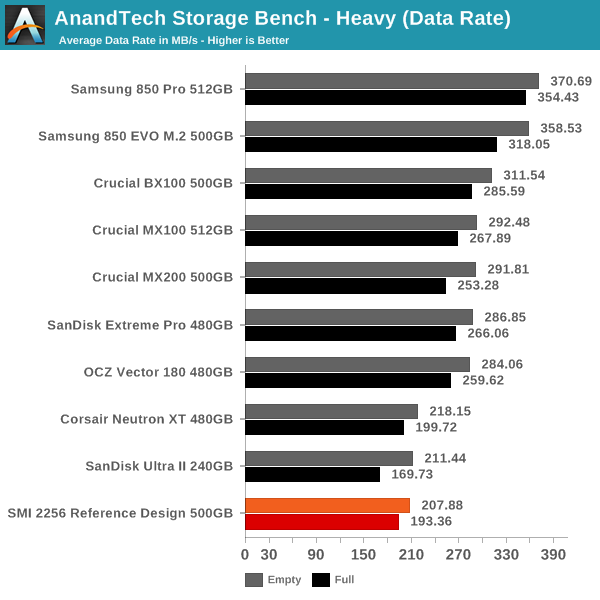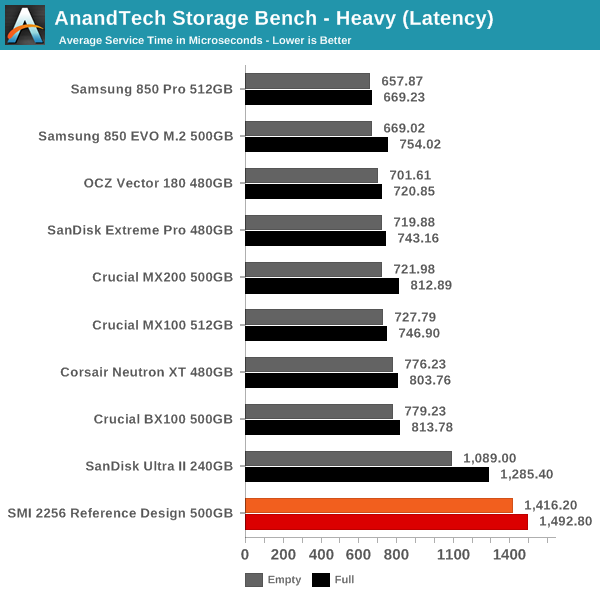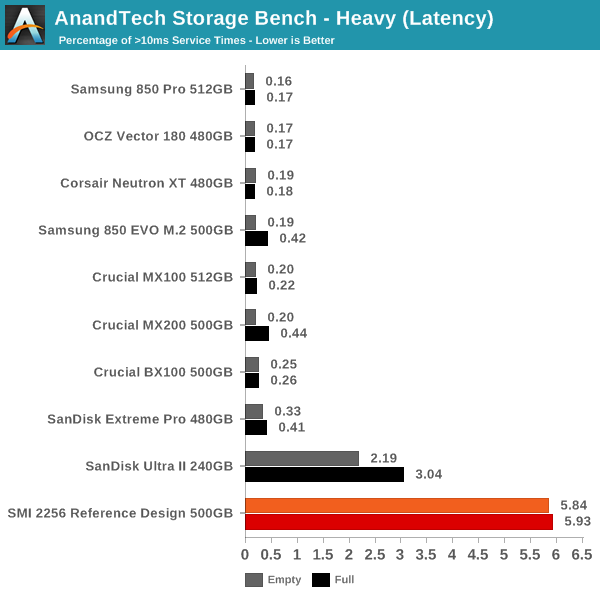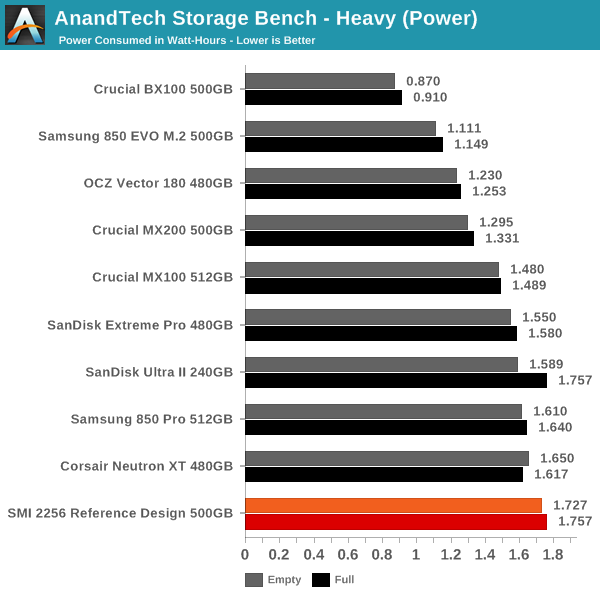Silicon Motion SM2256 SSD Controller Preview: TLC for Everyone
by Kristian Vättö on June 17, 2015 8:15 AM EST- Posted in
- Storage
- SSDs
- TLC
- Silicon Motion
- SM2256
AnandTech Storage Bench - Heavy
While The Destroyer focuses on sustained and worst-case performance by hammering the drive with nearly 1TB worth of writes, the Heavy trace provides a more typical enthusiast and power user workload. By writing less to the drive, the Heavy trace doesn't drive the SSD into steady-state and thus the trace gives us a good idea of peak performance combined with some basic garbage collection routines. For full details of the test, please refer to the this article.

The performance isn't overwhelming in our Heavy trace either. Again average data rate is decent, but in terms of latency the SMI 2256 is worse than SanDisk's Ultra II and by a fairly significant margin.

The number of >10ms IOs is alarming, unfortunately. MLC drives usually have less than half a percent, whereas the SMI 2256 is close to 6%.

Even though the performance isn't that high, the power consumption is among the highest we've tested. It's not substantially higher compared to competing MLC drives, but compared to e.g. the 850 EVO there is a tremendous difference.











34 Comments
View All Comments
Oxford Guy - Saturday, June 20, 2015 - link
Apple reportedly abandoned TLC because of the defects.serndipity - Saturday, June 20, 2015 - link
Have noticed that, as the NAND manufacturers shrunk the die process, issues with both MLC and TLC based SSDs have begun surfacing.Glad to see that Samsung, with its 3D NAND technology, used in the 850 PRO and 850 EVO, has been able to return to a much more stable process size (e.g. almost 3X that of current MLC).
viktorp - Thursday, July 2, 2015 - link
TLC NAND isn’t welcome at any price.Ask yourself simple question – what parts of your personal data will you trust to storage designed specifically to have 10 times less endurance than technology it is supposed to replace (MLC).
I am upset just thinking that someone thought of it as being a good idea.
cbjwthwm - Thursday, September 3, 2015 - link
The big problem here is a newer gen product at 2x the capacity of the equivalent architecture Sandisk Ultra II which for the most part gets outperformed by it. It would be interesting to see what the shipping firmware of this type of product eventually performed like compared to the reference design, but otherwise I see no reason to consider this vs the Marvell-based Ultra II.